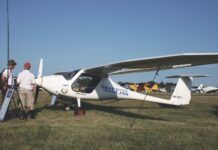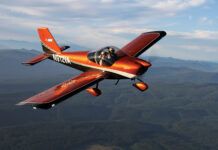 Question: I see all sorts of former certified aircraft flying as Experimentals, yet people keep telling me it can’t be done. What’s the official FAA policy?
Question: I see all sorts of former certified aircraft flying as Experimentals, yet people keep telling me it can’t be done. What’s the official FAA policy?
Answer: There are several Experimental categories. You don’t specify which one you are looking at going into.
There are a few instances where a certified aircraft may go into an Experimental category. Experimental exhibition is probably the most common. This would be for demonstrations, air racing, making movies, etc. Testing for a proposed STC would be another.
One important thing to consider is that once an aircraft is converted to Experimental status, it’s almost impossible to return it to standard category.
If you are talking about going into Experimental/Amateur-Built, that cannot be done. To be eligible for Amateur-Built status, you have to prove that more than 50% of the aircraft was built by amateurs for the purpose of education and recreation. And that just doesn’t apply to certified aircraft.
Some people try to say that they “rebuilt” the aircraft. Unfortunately rebuilding is considered a “repair” and is not “building.”
Question: What are the pros and cons of an ELSA versus an E/A-B built to LSA-compliant standards? My only caveat is they both have to support flight under Sport Pilot privileges.
Answer: Each category has its advantages, so it depends on what is most important to you. Here are the basic differences:
- ELSA has a five-hour minimum Phase I. E/A-B has a 40-hour minimum.
- ELSA must be built exactly per plans. E/A-B not.
- ELSA requires a 16-hour class for the repairman certificate. E/A-B only requires that you file an application.
- ELSA subsequent owners are eligible for the repairman certificate. E/A-B subsequent owners are not.
- ELSA may be modified after initial certification, but not outside LSA parameters. E/A-B may be modified outside of LSA parameters (but the aircraft will no longer qualify as an LSA).
Be aware that most homebuilt aircraft that meet LSA requirements can only be built E/A-B. In order to qualify as an ELSA, the aircraft must be built from a certificated ELSA kit. Most kits have not received this certification.
Question: I own an Experimental/Amateur-Built airplane that has an 80-hp Rotax 912 UL. The plane was built in 2000, and I bought it from the builder in 2009. If I replace the engine with a 100-hp Rotax 912 ULS, does the plane have to be inspected again by the FAA?
Answer: As always, a set of operating limitations are issued to Amateur-Built aircraft. This document controls pretty much everything you can do to that aircraft.
Somewhere around 1999 to 2000, the basic language of operating limitations was changed. There should be a paragraph in your op lims that starts with “After incorporating a major change as described in part 21.93…” The continuation of this paragraph should tell you the exact procedure that you are to follow.
Earlier versions require you to get a new airworthiness inspection. Later versions allow the aircraft owner to make the changes and place the aircraft back into Phase I and test for a minimum of five hours.
Please send your questions for DAR Asberry to [email protected] with “Ask the DAR” in the subject line.













